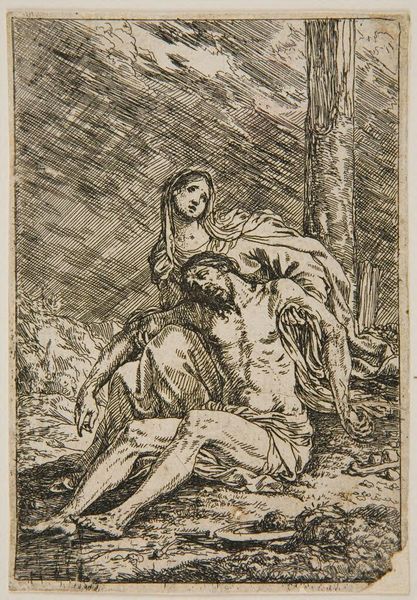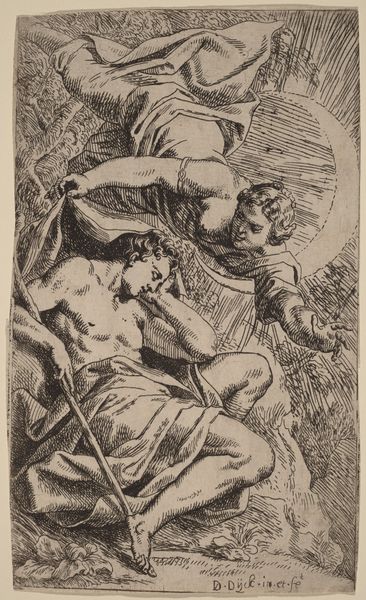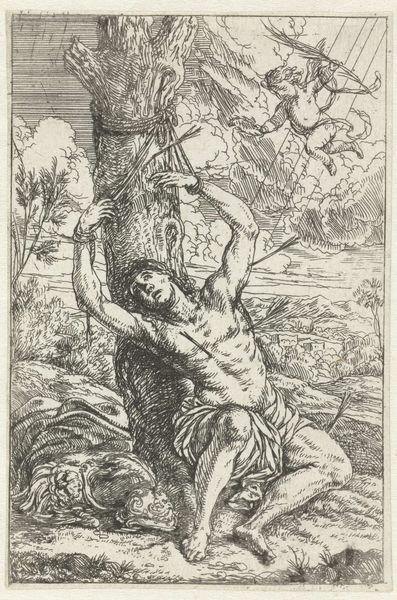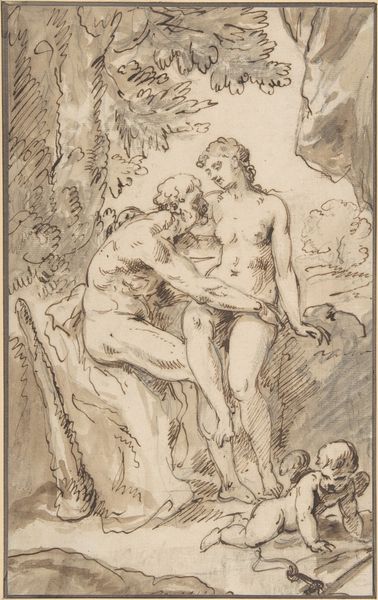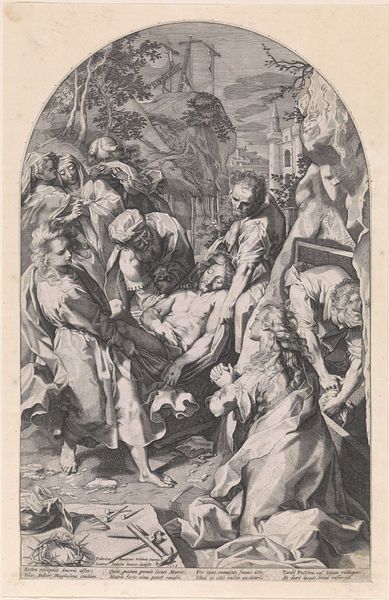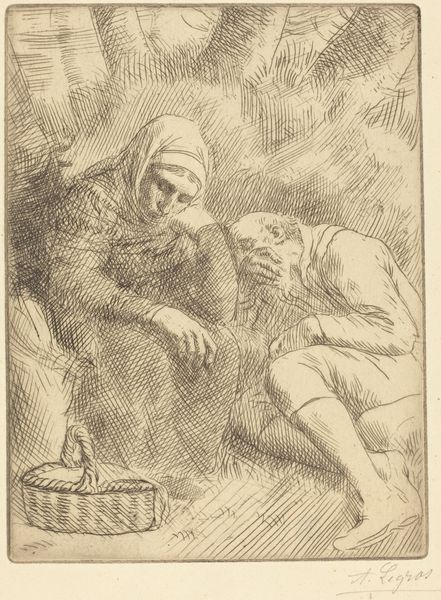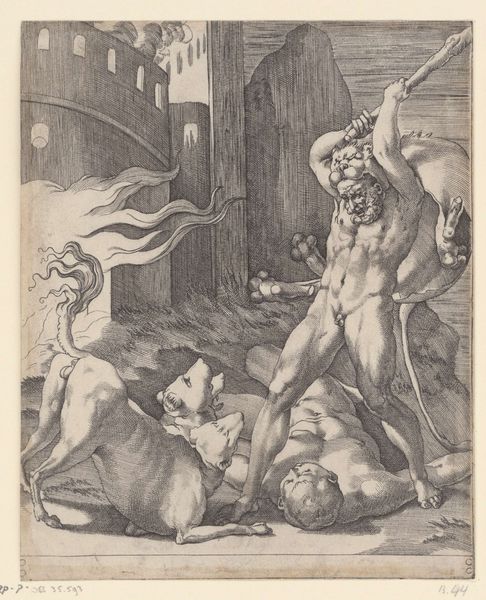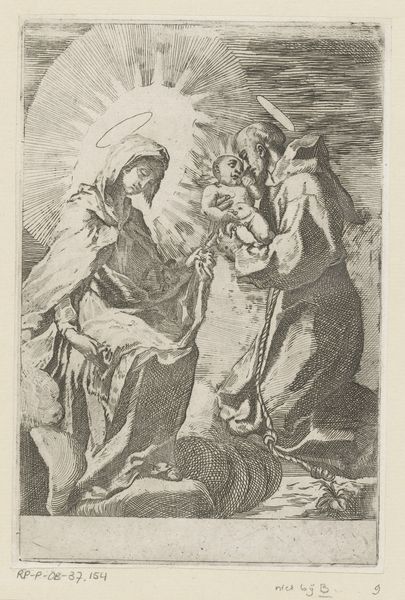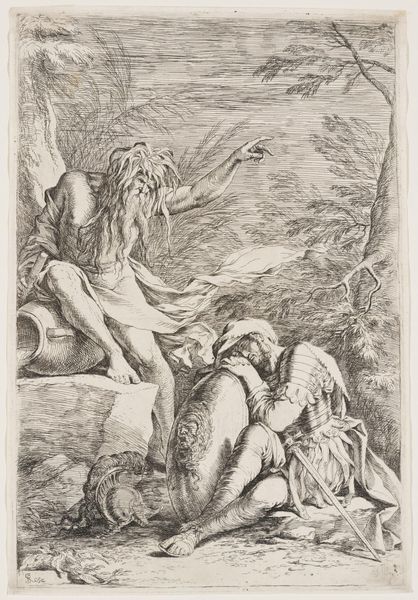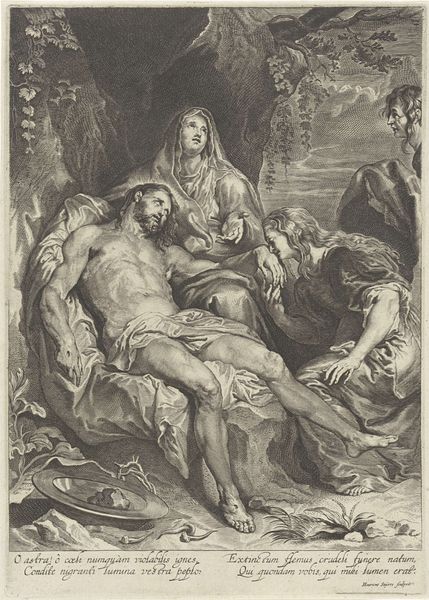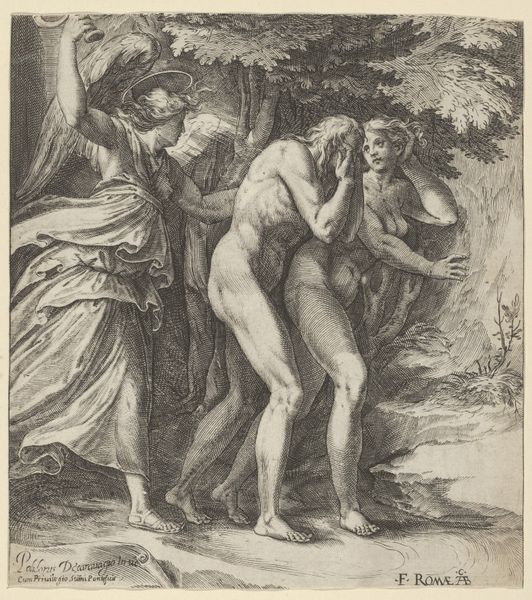
drawing, intaglio, engraving
#
portrait
#
drawing
#
baroque
#
intaglio
#
landscape
#
figuration
#
history-painting
#
engraving
#
miniature
Dimensions: height 113 mm, width 78 mm
Copyright: Rijks Museum: Open Domain
Editor: This engraving, "Maria met het lichaam van Christus (Pietà)" by Jonas Umbach, made sometime between 1634 and 1693, evokes such a somber mood. The stark lines and shading really amplify the emotion of the scene. What symbolic significance do you see in its composition? Curator: Well, the Pietà, representing Mary cradling the dead Christ, is itself a potent symbol deeply embedded in Christian iconography. Umbach uses it here, tapping into centuries of accumulated grief and devotion. Notice how the stark tree beside them rises as an emblem of the cross? Editor: Yes, the cross, I see it. And what about Mary’s expression? It's quite haunting. Curator: Indeed. Look at the upward gaze. Is it sorrow, supplication, or a glimpse of hope? Umbach invites us to consider all these readings simultaneously. Consider also, what does it tell us about Baroque sensibilities in art? What kind of memory is being preserved and invoked here? Editor: So, the engraving uses familiar religious imagery but also encourages individual interpretation. It speaks to cultural memory through universally understood symbols, but the emotional weight rests with the viewer's response. Curator: Precisely! The cultural context amplifies its resonance; the piece echoes the grief of generations while offering a space for personal reflection on loss and faith. It’s not just a historical scene, but an invitation into shared human experiences through powerful, recognizable imagery. Editor: It’s fascinating how the piece combines historical narrative with such deeply personal emotion, all through symbols and archetypes. Thanks for the insightful analysis! Curator: My pleasure! It's through this layered understanding of symbols that we connect with the art and with each other across time.
Comments
No comments
Be the first to comment and join the conversation on the ultimate creative platform.
